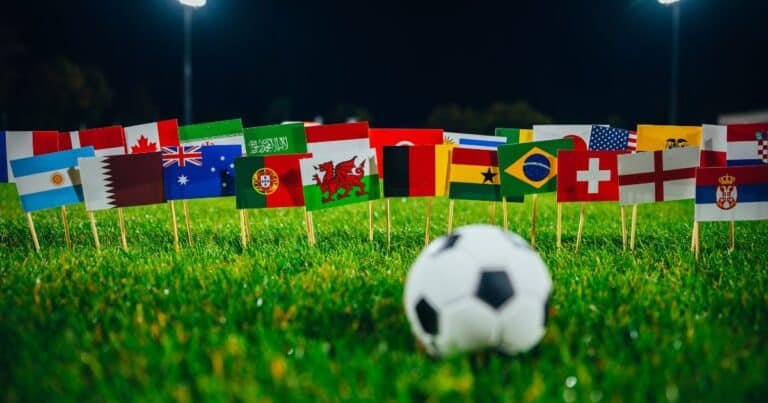Over the past quarter century, mixed martial arts (MMA) has rapidly evolved from a controversial niche sport into a mainstream entertainment and competitive powerhouse. By integrating techniques from various combat disciplines, MMA has reshaped the combat sports landscape. This multi-billion dollar industry now attracts millions of passionate fans worldwide.
Origins and Early Controversy
Mixed martial arts originated from the ancient Olympic combat sport of pankration in Greece, which blended wrestling and boxing. Modern MMA took shape in the early 1990s through organizations like the Ultimate Fighting Championship (UFC), founded in 1993. Early events had minimal rules and intense brutality, leading to widespread controversy over safety. But increased regulations, evolving fighter skills, and larger media exposure eventually helped MMA shed its controversial image. It is now regulated similarly to boxing and other combat sports.
MMA Comes to Prominence

Several key factors fueled MMA’s dramatic rise in popularity since 2000:
- Television and Media Deals – Major broadcast deals like the UFC’s long-term deal with Fox in 2011 brought MMA into the mainstream. MMA also capitalized on the digital age through pay-per-view events and social media marketing.
- Dynamic Personalities – Charismatic, outspoken fighters like Conor McGregor made MMA intriguing and drove interest through hyped grudge matches and media feuds.
- New Training and Styles – Fighters adopted new training methods blending multiple disciplines like boxing, Brazilian jiu-jitsu, wrestling, and muay thai. This technical evolution made fights more dynamic and competitive.
- Globalization – MMA organizations held events and recruited talent worldwide, accelerating the sport’s global expansion. The UFC held its first Mexican event in 2019 and will debut in France in 2023.
Today Mixed martial arts rivals boxing and WWE wrestling in popularity and revenue, cementing its place as a permanent fixture on the sports map.
Notable MMA Organizations
While hundreds of mixed martial arts promotions exist globally, several major brands have emerged as leaders in growing the sport:
- Ultimate Fighting Championship (UFC) – Founded in 1993, the UFC is the largest, most profitable MMA promotion worldwide, valued at over $7 billion. Nearly 500 fighters are under UFC contract across multiple weight classes.
- Bellator MMA – Owned by media giant Viacom, Bellator is the UFC’s chief American competitor, featuring fighters like Cris Cyborg and A.J. McKee. Bellator emphasizes flashy knockouts to attract viewers.
- ONE Championship – Headquartered in Singapore, ONE Championship focuses on Asian MMA talent and fans. With over 2.5 billion potential viewers in Asia, ONE has become a formidable emerging player.
- Professional Fighters League (PFL) – The PFL uses a seasonal tournament format with cash prizes. High payouts lure fighters like two-time Olympic judo gold medalist Kayla Harrison.
- RIZIN Fighting Federation – This Japanese MMA promotion known for theatrical entrances, costumes and pyrotechnics holds New Year’s Eve events at Saitama Super Arena before 50,000 fans.

Notable MMA Male Fighters
A new generation of skilled, dynamic male fighters from diverse backgrounds has energized Mixed martial arts and cultivated massive fan followings:
- Conor McGregor – Arguably the most famous and outspoken MMA fighter ever, Irish star McGregor has transcended the sport through his quick knockouts, brash persona, and box office appeal.
- Khabib Nurmagomedov – This undefeated Russian grappling sensation who retired 29-0 became one of the UFC’s biggest recent stars before retiring in 2020. His mauling style was nearly impossible to stop.
- Israel Adesanya – With his rangy kickboxing skills and flamboyant style, Nigerian-born New Zealander Adesanya has emerged as one of MMA’s most intriguing champions.
- Ciryl Gane – A former muay thai kickboxer, French heavyweight Gane has rapidly climbed the UFC ranks with creative striking. He could become MMA’s next crossover star.
- Demetrious Johnson – Nicknamed “Mighty Mouse” due to his 5’3″ frame, expert wrestler Johnson holds the UFC record for title defenses at flyweight.
Top MMA Female Fighters
Once barred from men’s Mixed martial arts promotions, female stars have carved their own niche in recent years, highlighted by megastars like:
- Ronda Rousey – An Olympic judo medalist, Rousey became the first female UFC champion in 2012 and remains the sport’s most famous women’s pioneer.
- Cris Cyborg – This ferocious Brazilian striker dominated women’s MMA for a decade, conquering titles in the UFC, Bellator, and Strikeforce.
- Amanda Nunes – Brazil’s Nunes made history as the first woman to hold two UFC titles simultaneously. Her crisp boxing and submissions remain virtually unstoppable.
- Rose Namajunas – With supreme technique and poise, American Namajunas defeated dominant champ Zhang Weili to capture the UFC strawweight belt in 2021.
- Valentina Shevchenko – A complete fighter with otherworldly kicking skill, Kyrgyzstani-Peruvian Shevchenko has ruled the UFC women’s flyweight division unopposed.

Global Appeal and Emerging Markets
A driving force behind MMA’s growth is its expanding popularity across global regions beyond its American roots:
Brazil – MMA mania swept Brazil in the 1990s and launched iconic champions like the Nogueira brothers, Vitor Belfort and Anderson Silva. Brazilian MMA talent remains among the world’s best.
Russia/Eastern Europe – MMA’s raw nature appeals to tough-minded fans here. Stars like Khabib Nurmagomedov, Petr Yan and Jan Błachowicz demonstrate this region’s deep fighting talent.
Western Europe – MMA has stormed mainstream in places like Ireland and France. Irish athletes Conor McGregor and Tom Egan brought MMA fever to Ireland. France’s Ciryl Gane is the current heavyweight sensation.
China – Chinese MMA organization Kunlun Fight has drawn huge crowds by integrating kung fu and wushu with MMA. The sport is taking off rapidly in China.
India – Bollywood celebrities are buying into Indian MMA promotions like Super Fight League. MMA India hopes to cultivate grassroots talent for the future.
Philippines – MMA is the second most popular sport after basketball in this boxing-crazed nation. Filipino ONE Championship star Eduard Folayang is a national hero.
Impact on Other Combat Sports
MMA’s popularity has impacted the landscape of other combat sports in unique ways:
Boxing – MMA provides stiffer competition for boxing but also cross-promotional opportunities. MMA striking improves with boxing training while boxers experiment with MMA bouts.
Wrestling – Top wrestlers like Henry Cejudo and Ben Askren have transitioned to MMA fame. MMA gives wrestling exposure and financial rewards not always found in amateur wrestling.
Kickboxing – Many elite strikers like Adesanya now pursue MMA for income stability and publicity unavailable in kickboxing alone. Some compete in both concurrently.
Judo – Ronda Rousey’s fame attracted judo athletes to MMA. Cross-training in MMA striking and grappling has benefited judo practitioners.
Sumo – A few sumo washouts like Taiju Noa have managed successful MMA careers. However, MMA remains controversial in Japan’s rigid sumo community.

The Future of MMA
As a still young sport, MMA should continue evolving in exciting ways in the coming decade:
- MMA will cement itself as a mainstream fixture akin to soccer or baseball in fan interest and talent pool size.
- Promotions will expand into untapped markets in Latin America, Africa and the Middle East.
- Training methods and fighter skills will become increasingly sophisticated.
- Pay and sponsorship income for top fighters will rise dramatically.
- Digital streaming and virtual reality broadcasting will deepen MMA’s reach.
- More big-name boxers and other combat athletes will try crossover bouts.
- Selection as an Olympic sport remains the long-term goal.
Conclusion
In just 25 years, MMA has completed a remarkable transformation – from controversial fringe spectacle to beloved global sport. With increased talent, technical mastery, female inclusion, and global appeal, the future looks bright for MMA’s continued positive evolution and expansion in the mainstream sports world.
Frequently Asked Questions About Mixed Martial Arts
Q: When did MMA start gaining popularity?
A: MMA began shedding its controversial image in the early 2000s through media deals, dynamic personalities, evolving talent and globalization.
Q: What makes MMA different from boxing?
A: MMA incorporates the full range of combat skills – striking, kicking, wrestling and submissions. Fights use an octagonal cage instead of a ring.
Q: Why did MMA used to be controversial?
A: Early MMA events had minimal rules and brutality, raising safety concerns. But increased regulations made MMA comparable to other combat sports.
Q: Which countries have risen as MMA hotspots?
A: Brazil, Russia, Ireland, China, and the Philippines are some regions where MMA popularity has exploded most recently.
Q: Will MMA ever become an Olympic sport?
A: MMA advocates are lobbying for eventual Olympic inclusion, but overcoming concerns around violence and safety. The process could take many years.




